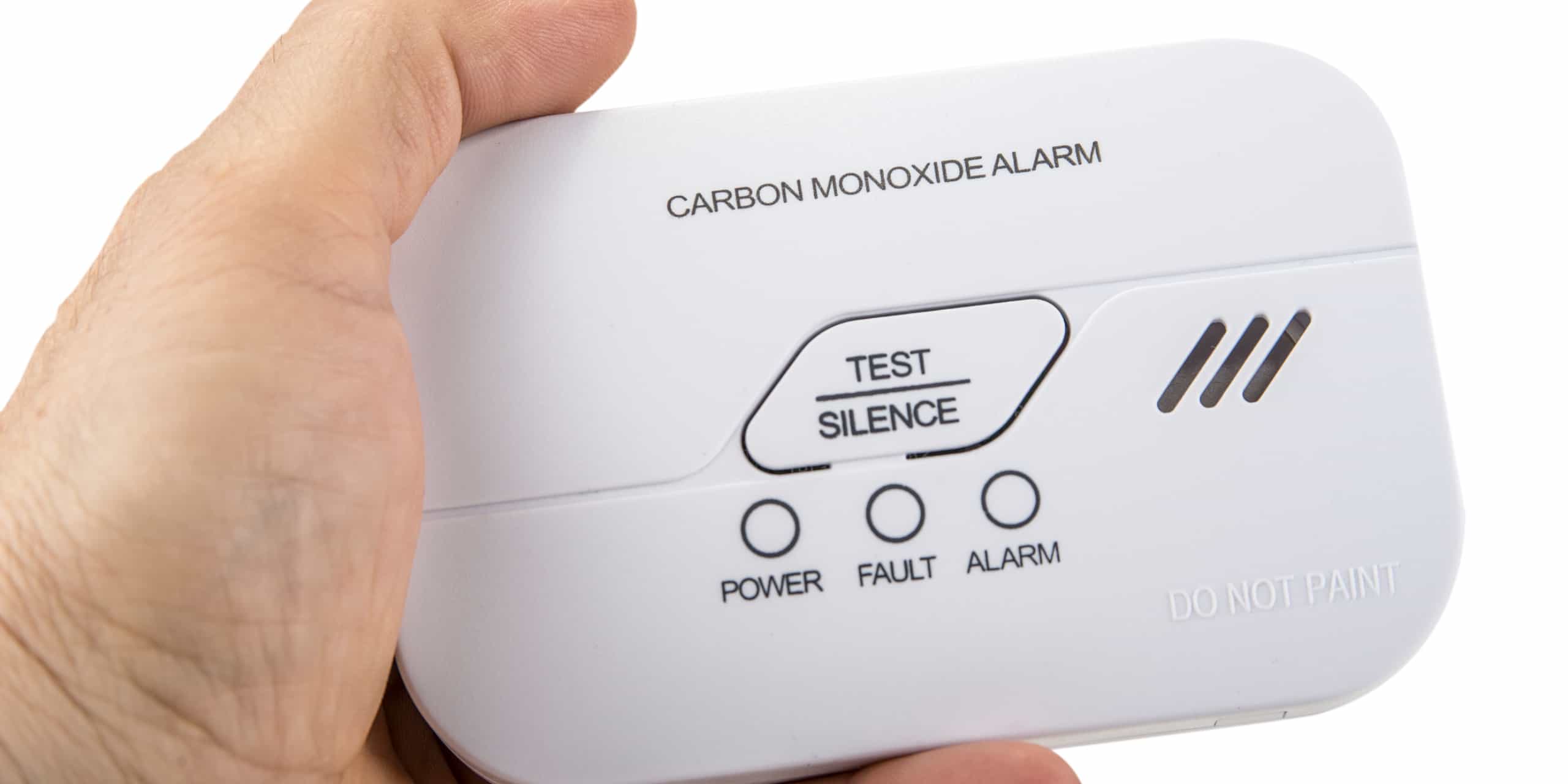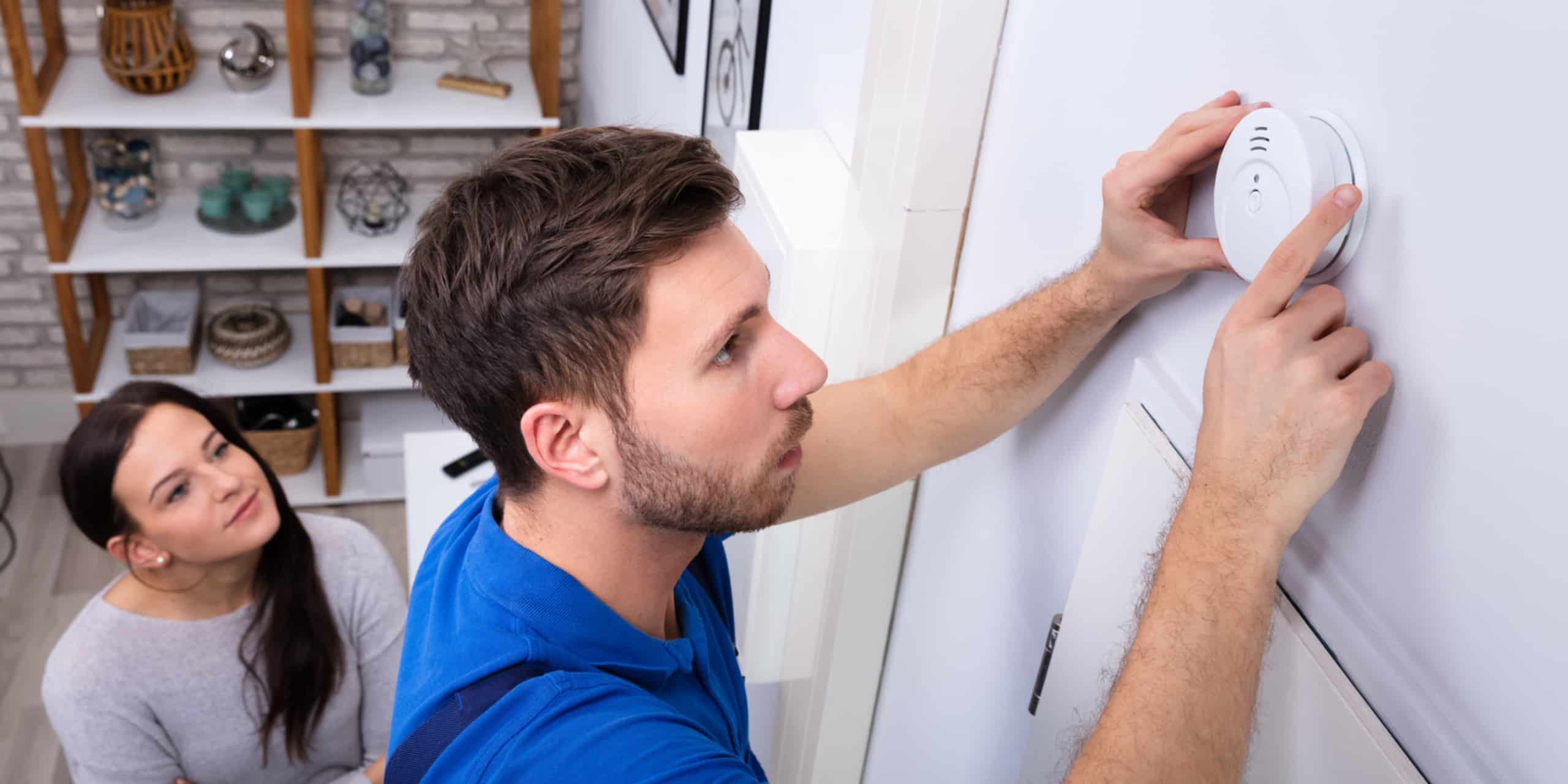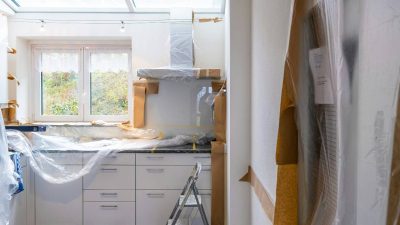There is, and has always been, quite a lot of confusion around carbon monoxide detectors in rental properties. Do I need them? How many do I need? Where do they need to be installed? Why are carbon monoxide detectors important? So many questions!
So, just exactly what are landlords required to provide when it comes to everything carbon monoxide? What is expected of tenants? Also known as the ‘silent killer’, it’s clear that carbon monoxide is not to be messed with.
What is carbon monoxide – the ‘silent killer’?
Before we go any further, here’s a quick reminder for anyone who snoozed through school science class:
- carbon monoxide (also written as CO) is a gas, but has no smell, taste or colour
- it’s produced when a material containing carbon is burned, but with insufficient heat or oxygen present to create carbon dioxide
- common household appliances for cooking and heating can produce carbon monoxide if they’re poorly installed, not maintained properly, develop a fault or have inadequate provision for combustion air
- it is poisonous to both humans and animals – exposure at low levels can result in headaches, dizziness and cognitive impairments; high levels of exposure can cause serious health problems and even death

Carbon monoxide detectors and rental property regulations
New regulations for the rental sector were introduced back in December 2015. These updated rules gave clarity on previously contradicting guidelines which confused landlords and tenants alike. This addition to the Housing (Scotland) Act 2014 requires landlords to ensure that all properties rented in Scotland are habitable, structurally sound and fundamentally safe. This includes the provision of long-life, sealed battery carbon monoxide detectors.
What do landlords need to know?
Landlords must ensure that they adhere to these regulations and that suitable provisions are in place for the safe detection of carbon monoxide:
- They must ensure that every room containing a gas-burning appliance (including boilers, fires and stoves) has a sealed battery-powered CO detector. The only exceptions are for gas cooking appliances which do not need any CO protection, as they are used solely for short periods of cooking, rather than longer periods to heat a space.
- The removable battery type of detectors (which use AA batteries like in your TV remote) are no longer suitable and should be replaced. This ensures that tenants can’t simply remove the batteries in the event of the detector going off.
- There should also be suitable CO detectors installed in any room containing a flue. This means that if you have a boiler in your hall cupboard and the flue runs through a hall and then a bedroom to terminate on an external wall, there must be a CO detector in both the hall and bedroom. This gives the tenants the best chance to detect an issue before it becomes a threat.
- All detectors must have a clear installation date and expiry date.
- Detectors should also be checked annually as part of the gas safety check to ensure that they are still in date and in working order.
Landlords failing to adhere to these regulations in any way could have action taken against them by the First-tier Tribunal for Scotland (Housing and Property Chamber).
Why are these regulations important?
In 2016 it was reported that an estimated one in 10 Scottish adults has suffered from carbon monoxide poisoning in their home. In addition, studies showed that the likelihood of serious exposure to carbon monoxide in rented properties was three times higher than in other housing provisions.
There has been a huge reduction in carbon monoxide related incidents since these regulations have been in place.
Where should carbon monoxide detectors be installed?
Manufacturer’s guidance should always be followed when installing a CO detector in any property. In the absence of manufacturer’s instructions, the following standard guidance should be followed:
- ceiling-mounted CO detectors should be at least 30cm from any walls
- wall-mounted COs should be at least 15cm below the ceiling
- both must be fitted away from corners, windows and spaces with restricted air movement like dropped ceilings and alcoves
- the recommended distance between an appliance and CO detector is between 1-3 metres
- if an appliance is installed in a cupboard or under the stairs, then the detector should be installed outside the cupboard
- if an appliance is fitted in a loft space, then you must have a CO detector fitted within 1-3 metres of the appliance within the loft and have an interlinked CO detector sited outside the loft, near the access hatch. These can be either radio frequency linked or hard wired. The reason for this is to ensure that tenants can be clearly alerted of the presence of CO in the loft before it reaches dangerous levels.

Am I responsible for maintaining carbon monoxide alarms?
If you are a landlord then yes, you are responsible for correctly maintaining and replacing any CO alarms you have within your rental property. Should a detector expire or become faulty during a tenancy, it’s the landlord’s responsibility to replace it.
What do tenants need to know?
Tenants are responsible for reporting any issues regarding the CO detectors in their rental property, and should know which actions to take should a detector start beeping or flashing:
- all gas appliances should be switched off
- doors and windows should be opened
- all occupants should then exit the property and call their landlord or managing agent to report a possible leak of carbon monoxide
Need some help?
It’s essential that you use a Gas Safe Registered installer to carry out gas safety checks, maintenance and repairs on any property. It’s dangerous for anyone else to undertake these and may be illegal.
Most companies will also be happy to answer any questions or concerns you have about the current carbon monoxide regulations and your responsibilities as a landlord, letting agent or tenant.
Once you have found a competent, reputable company, you should be confident that they will work to ensure that you are fully protected. You should expect your chosen company to display their accreditations, and for their regular compliance work to include:











